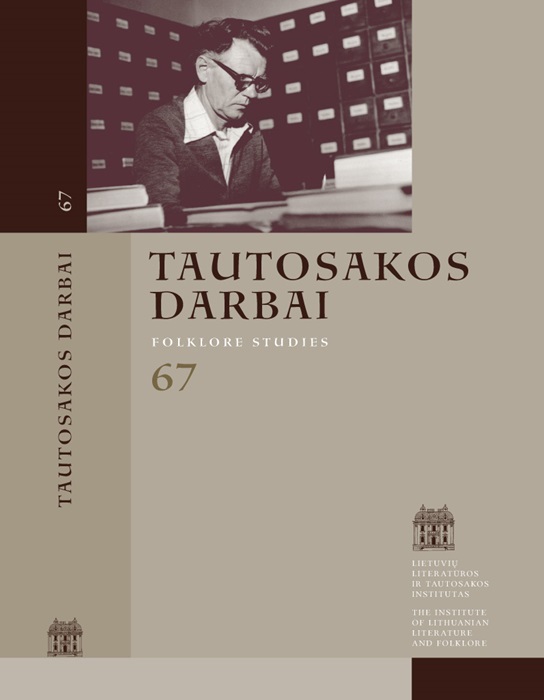The Image of Geese in Lithuanian Phraseology
Abstract
The article focuses on the image of geese in Lithuanian phraseology, attempting to define its peculiarities and possible connections with other phenomena of the traditional culture. The research material consists of Lithuanian phraseologisms picked out from the lexicographical sources and mentioning either goose, gander, or gosling. Analysis of these phraseologisms reveals that the main peculiarities of the image are related to appearance, character, and behavior of the birds, as well as to the actions performed with them. Phraseologisms emphasize the webbed feet of the geese, their neck, blue gizzard, enlarged reproductive organs, or scabrous skin when deplumed. Geese are depicted as noisy, greedy, oat-eating birds, they waddle in a line, following each other. Their image is not without controversies: they can get wet, but their feathers do not get drenched through. In phraseology, geese are mainly characterized as angry and stupid. The depiction of geese-tending conveys significant cultural information related to the notion of the afterlife, as well as entertainment and economic activities. In general, the image of geese in Lithuanian phraseology is ascribed a negative connotation.

This work is licensed under a Creative Commons Attribution 4.0 International License.
Downloads
Most read articles by the same author(s)
- Vilma Daugirdaitė, Author Guidelines and Bibliographical Data , Tautosakos darbai: Vol. 66 (2023): Tautosakos darbai
- Greta Paskočiumaitė, Austė Nakienė, Bronė Stundžienė, Jurga Sadauskienė, Chronicle , Tautosakos darbai: Vol. 62 (2021)
- Ramunė Bleizgienė, Sensual Relationship between the Individual and the World in the Literary Fiction by Žemaitė , Tautosakos darbai: Vol. 51 (2016)
- Dalia Zaikauskienė, Lilija Kudirkienė, The Way to Proverbs. Dalia Zaikauskienė interviewing paremiologist Lilija Kudirkienė , Tautosakos darbai: Vol. 61 (2021)
- Jurgita Ūsaitytė, Personal Collections of Texts from the Second Half of the 19th Century along with Their Historical Context , Tautosakos darbai: Vol. 55 (2018)
- Dainius Razauskas, Mythical Images in “The Seasons” by Kristijonas Donelaitis: the Grass , Tautosakos darbai: Vol. 49 (2015)
- Žydrūnas Vičinskas, Verification of Mythological Material on Celebrations as Recorded by Matthaeus Praetorius: the Celebration of Midsummer Herb Fest and Driving the Cattle out to Pasture , Tautosakos darbai: Vol. 56 (2018)
- Austė Nakienė, Daiva Račiūnaitė-Vyčinienė, Rokas Sinkevičius, Aušra Žičkienė, Nijolė Laurinkienė, Rūta Žarskienė, Chronicle , Tautosakos darbai: Vol. 53 (2017)
- Jūratė Šlekonytė , Lietuvių folkloristės veikalas – prestižinėje mokslo leidinių serijoje , Tautosakos darbai: Vol. 51 (2016)
- Rokas Sinkevičius , Dangus virš Baltarusijos prabilo savais vardais , Tautosakos darbai: Vol. 51 (2016)




